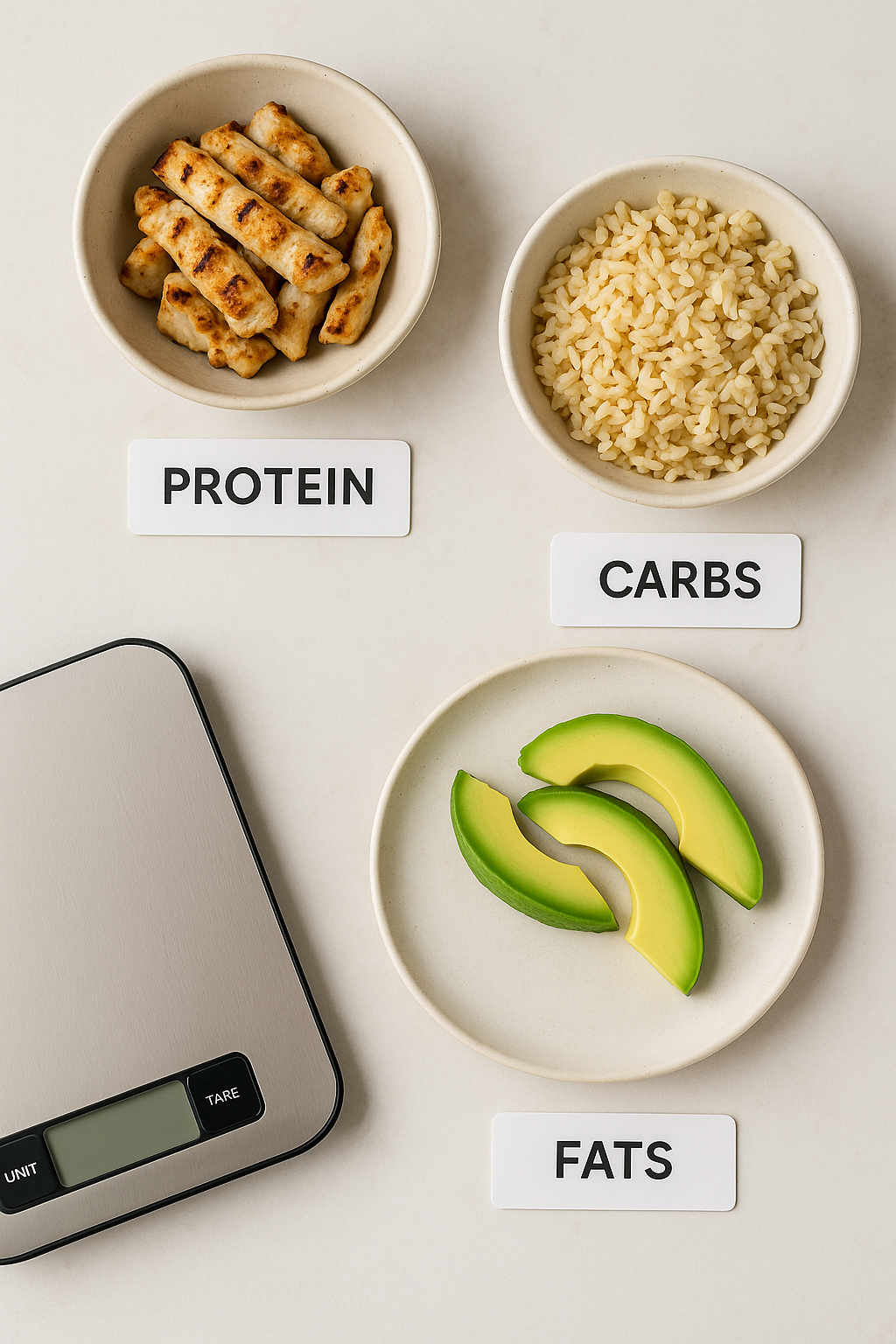Some of the links in this post are affiliate links. That means if you click and buy something, I'll earn a small commission, but don't worry it is at no extra cost to you. :)
You’ve probably heard people say “I’m tracking my macros” or “This meal hits my macros”—and maybe you nodded along while thinking – what are macros?
You’re not alone.
Macros sound like something for bodybuilders or diet fanatics, but they’re actually just the nutrients in food that your body needs the most: protein, carbohydrates, and fats.
And here’s the thing—you’re already eating macros every day. This post will help you understand what are macros, why they matter, and how to make smarter food choices without totally changing how you cook.
If you’ve ever felt confused by food labels or unsure about what “balanced” means, this guide is for you.
And if you already use a kitchen scale or want to get better at portion control, you’ll want to check out our guide to using a precision kitchen scale for macro tracking success.
It’s a great next step once you know the basics of what are macros.
Contents
What Are Macros?
Macros (short for macronutrients) are the three main nutrients that make up the calories in your food:
Protein helps your body build and repair things like muscles, bones, and even skin.
Carbohydrates give you energy—your body uses them first when you move, think, or just go through your day.
Fats support your hormones, brain, and cells—and yes, your body actually needs them.
Almost every food has a mix of these three. Chicken? Mostly protein and fat. Bread? Mostly carbs. Peanut butter? A mix of fat, protein, and some carbs.
Understanding macros isn’t about labeling food as “good” or “bad.” It’s about seeing what your food is made of so you can make it work for your goals.

Why Do Macros Matter?
When you know how much protein, fat, and carbs you’re eating, you can start to see how your food is affecting your energy, mood, and even how full you feel after meals.
Maybe you’re dragging through the afternoon because your lunch was all carbs and no protein. Or maybe you’re eating healthy foods but still gaining weight because the portions are larger than you think.
It’s not about tracking perfectly forever. It’s about getting more aware of what your meals are made of. Little changes can add up, especially if you’re trying to build muscle, manage blood sugar, lose weight, or just eat more balanced meals.
How to Start Noticing Macros in Your Meals
You don’t have to track everything you eat to start learning. One simple step is to start reading nutrition labels. Look for protein, carbs, and fat—those three numbers tell you the macro breakdown of packaged foods.
If you want to go a little deeper, try logging one meal a day into a food tracking app. You’ll quickly start to notice what types of foods are high in protein (like meat, eggs, or tofu) and which are heavier in carbs or fat.
Want a shortcut? A good kitchen scale can make tracking way easier. You just weigh your food and it calculates the macros for you through a connected app.
If that sounds helpful, take a look at our Top 5 Smart Digital Kitchen Scales. They make the math part simple so you can focus on eating well.
Easy Macro-Friendly Swaps to Try
You don’t need to throw out your pantry or give up your favorite meals. Just try adding more balance to what you already eat.
Here are a few swaps that help you get a better macro mix without overthinking it:
- Add an egg or some Greek yogurt to breakfast for more protein
- Swap sugary granola for oats with peanut butter and fruit
- Use canned beans or lentils to add fiber and protein to soups or salads
- Try ground turkey or lean beef in pasta sauce to balance the carbs
- Choose whole wheat bread or tortillas to add fiber to a carb-heavy meal
These swaps aren’t about dieting—they’re about giving your body more of what it needs to stay full, energized, and steady throughout the day.
Do I Have to Track Every Bite?
Nope. In fact, for most people, just tracking one or two meals a day—or even just a few times a week—is enough to build awareness.
Over time, you’ll start to recognize macro patterns. You’ll know what a balanced plate looks like, and you’ll make smarter choices without needing an app for every snack.
Some people never track at all. They just learn to ask, “Where’s the protein?” or “Is this all carbs?” and adjust from there. It doesn’t have to be perfect to be helpful.
Final Thoughts on What Are Macros?
Macros aren’t something to stress about. They’re just a way to understand your food a little better. The more you learn, the easier it gets to eat meals that help you feel full, focused, and fueled—without second-guessing everything on your plate.
If you’re ready to take one small step, start by noticing your meals. Then try weighing a few key ingredients.
And if you want tools that make it easier, check out our Top 5 Smart Nutrition Scales for Macro Tracking or our step-by-step guide to using a kitchen scale.
Little by little, it all adds up.
You’ve got this.
~April